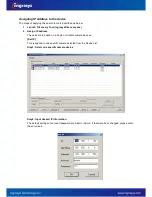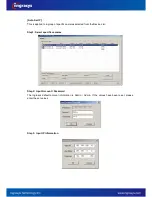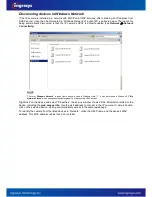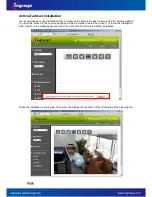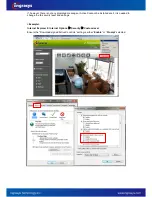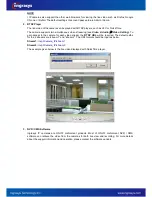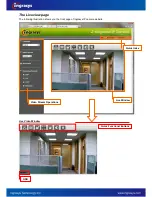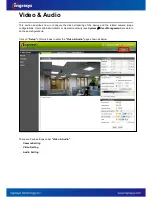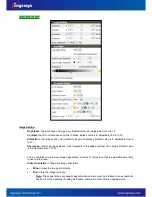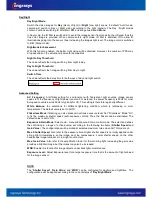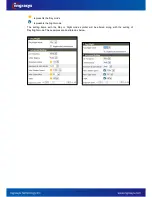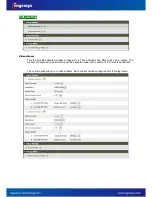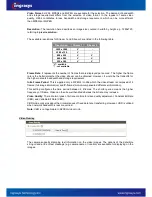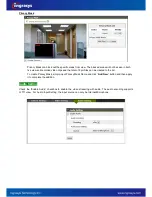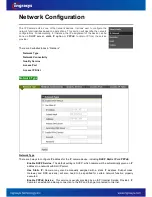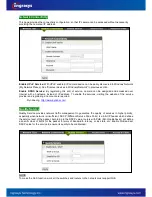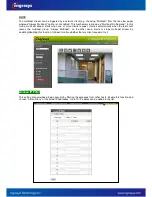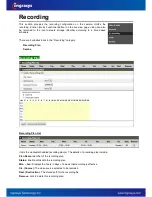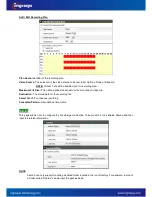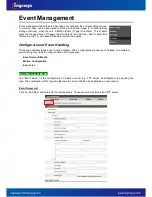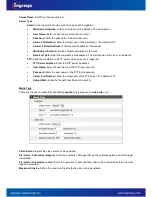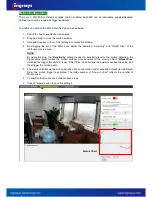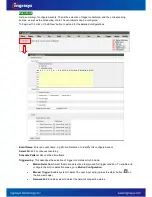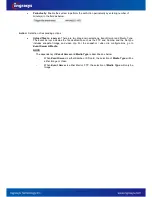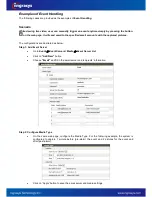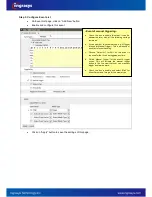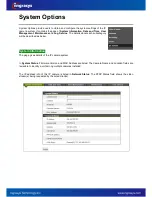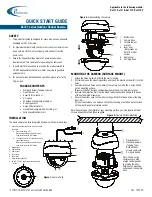
19
Video Format:
H.264, MPEG4 and MJPEG are available for the selection. The demand of bandwidth
and storage requirement differs from the selection of video format. In the request of same video
quality, H.264 contributes to less bandwidth and storage requirement, which can be more efficient
than MPEG4 or MJPEG.
Resolution:
The resolution here describes an image size counted in width by height, e.g. 1280x720,
referring to
pixel resolution
.
The available resolutions for Stream 1 and Stream 2 are listed in the following table.
Resolution
Stream 1
Stream 2
1920 x 1080
V
-
1280 x 720
V
-
800 x 450
V
V
640 x 360
V
V
320 x 180
V
V
“V”: available
“-“: not available
Frame Rate:
It represents the number of frames that are displayed per second. The higher the frame
rate is the better/smoother the video stream can be obtained. However, it would be the tradeoffs for
the higher network bandwidth and storage requirement.
Intra Frame Period:
This is applied only in MPEG4 / H.264 which the video stream is composed of
I
-
frames (full image information) and
P
-frames (motion-compensated difference information).
This setting configures the time period between 2
I
-frames. The shorter period means the higher
frequency of I-frame. Video can then be well handled whereas the bit rate may increase.
Video Quality:
There are two types of bit rate controls for video quality adjustment, Constant Bit Rate
(CBR) and Variable Bit Rate (VBR).
CBR mode concerns about the circumstances of fixed data rate transferring. However, VBR is utilized
when network bandwidth is less concerned.
Note: CBR is not applicable in MJPEG video mode
.
Video Overlay
The camera supports stamping text information on the video images. The options of the date/time
string or/and a line of text message (e.g. camera name or location) are available for displaying on the
images.

